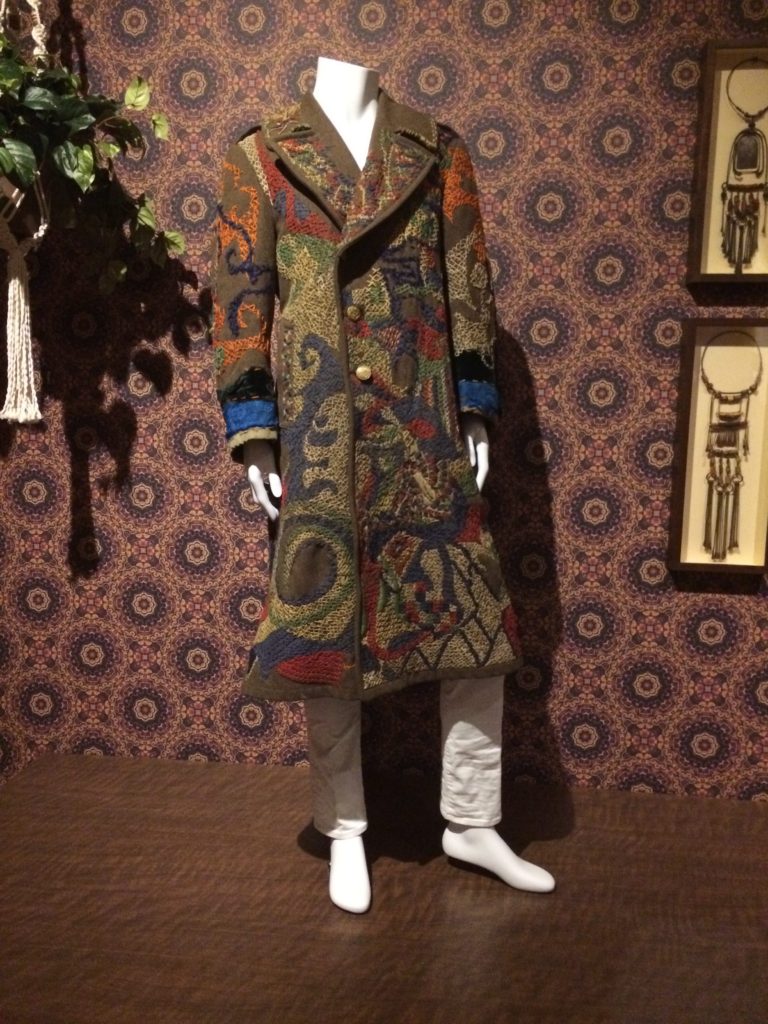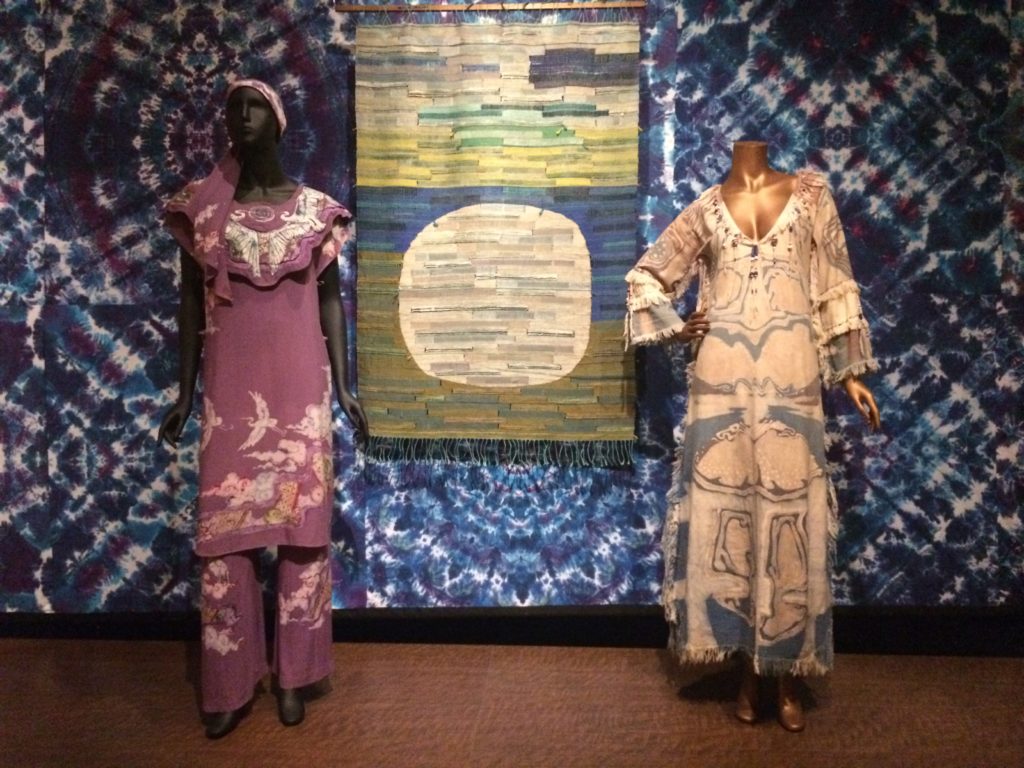Can Denim Protest?: “Counter-Culture” at the Museum of Art and Design
Much of the publicity surrounding the Museum of Art and Design’s new exhibition “Counter-Couture: Handmade Fashion in an American Counterculture” positions the show as a timely comment on fashion’s role in politics. In a day and age where hand knitted pussy-hats represent political protest, the show proposes that the power to resist lies in authenticity and self-expression. The show’s “hippie” outfits bring the viewer back to the 1960s and 1970s through the clothes worn by a generation to protest the Vietnam War, support the civil rights movement, and reject the consumerism of the American Dream and the conformism of their parents. The embroidery, tie-dye, and denim abundantly on display is offered as evidence of these “hippie” artists standing up to consumer capitalism.

MAD’s exhibition is spread across its fourth and fifth floors. The fourth floor focuses more on everyday dress. Here, the curators have installed colorful denim jackets, dresses made from faded stage curtains, and quilted vests all against wood panelling and patchwork blankets. The fifth floor shifts to performance outfits and couture pieces. On the walls are videos from Woodstock and record sleeves. In the center of the floor, a runway shows off shiny and patterned ensembles by participants in the Wearable Art scene, including San Francisco designer Kaisik Wong and painter K. Lee Manuel.
Michael Fajan’s 1967 Hand-embroidered and Applique Army Coat is the sort of garment that fulfills “Counter-Culture”’s aspirations to demonstrate the power of clothes to promote social change. In this work, Fajan turns a standard-issue military coat into a piece of art with embroidery in red, green, blue, and white, culminating in a bird of peace. The technique of embroidery, historically associated with femininity and domesticity, further transforms this relic of war and masculine aggression.

Other garments, like Mary Ann Schildknecht’s Embroidered Ensemble, are memorable as the unique result of the movement’s emphasis on individuality. While in prison for a hashish smuggling charge, Schildknecht created a skirt and shirt from bedsheets in her prison cell. Embroidery covers the whole ensemble save for a hole in the shirtsleeve, left––according to the curators––to allow the wearer to receive a blood transfusion. Alexandra Jacopetti Hart’s Orgasm Jean Skirt also stands as a memorably personal piece of fashion for its name alone, although the curators do not elaborate on the origins of the title.

But just as pussy-hats can be exclusionary, the clothes also show the limits of the new and revolutionary reality they aspire to create. The appropriation of indigenous aesthetics and non-Western cultures is common throughout, as in the jewelry made of antique Indian coins and Mexican silver milagros, and the dresses painted with floral motifs evoking a stereotyped “East.” While the curators refer to “a romanticization of indigenous people on the part of a dominant white culture,” they do not do enough to explore unpack this appropriation throughout the show, preferring to let the term “influence” cloak the issue in the rest of their labels.

In addition, while the show situates these clothes in the center of a fight for civil rights, the exhibit’s Black Pride section is embarrassingly small. On display there is merely a Simplicity pattern for a dashiki and a dashiki itself by an unknown artist. The show, that is, focuses on those people who have the necessary social capital to dress as if they are “other” rather than those– think of Coretta Scott King–who did the most to protest for civil rights.
This way, efforts to position “Counter Culture” as an inspiration in today’s political climate overlook the gaps in the argument the curators make with this exhibition. The curators stress that embracing the self–often in a world or within a state that denies one’s chosen terms of self-hood– is a powerful act that can be accomplished through clothing choices. To cloak one’s self in an armor of one’s own making, however, means little if that armor itself can repress and exclude. In failing to adequately address this movement’s appropriation of non-Western cultures and to materially connect these clothes to civil rights advocacy, the show does not have the relevance it promises.